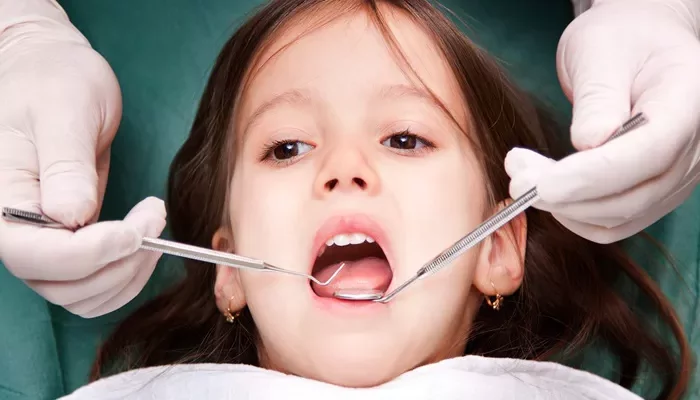The field of orthodontics has undergone remarkable advancements in recent years, particularly with the integration of smart devices and technology. These innovations have transformed the way we approach orthodontic treatment for children, offering more precise, efficient, and engaging solutions. In this article, we will explore how smart devices can significantly enhance children’s orthodontic experiences, from initial diagnosis to treatment monitoring and beyond.
AI-Assisted Diagnosis and Treatment Planning
Artificial Intelligence (AI) has revolutionized the diagnostic process in orthodontics. Traditional orthodontic diagnosis relies heavily on the clinician’s experience and visual inspection, which can be subjective and time-consuming. However, with AI-assisted tools, orthodontists can now leverage advanced algorithms to analyze dental and facial structures with unprecedented accuracy.
Smart devices, such as intra-oral scanners and 3D imaging systems, capture high-resolution images of the child’s teeth, gums, and jaw. These images are then fed into AI software, which performs a comprehensive analysis. The software can detect minute irregularities in tooth alignment, bite patterns, and jaw growth. By comparing the child’s oral structure to a vast database of normative data, AI can predict potential orthodontic issues and suggest tailored treatment plans.
One of the key benefits of AI-assisted diagnosis is its objectivity. Unlike human clinicians, AI algorithms do not suffer from fatigue or biases. They analyze data consistently and accurately, ensuring that every child receives a personalized and scientifically sound treatment plan. This precision is particularly important in pediatric orthodontics, where early intervention can significantly impact the child’s long-term oral health and aesthetics.
Moreover, AI-powered software can simulate different treatment scenarios and predict outcomes, enabling orthodontists to make informed decisions about the most effective treatment options. This predictive capability not only enhances treatment outcomes but also allows for more efficient use of resources, reducing the need for unnecessary adjustments and follow-up visits.
Real-Time Monitoring and Adjustment
Another critical aspect of smart devices in children’s orthodontics is their ability to provide real-time monitoring and adjustment. Traditional orthodontic appliances, such as braces and retainers, require frequent visits to the orthodontist for adjustments and check-ups. This can be inconvenient for busy families and may disrupt the child’s routine.
Smart orthodontic appliances, on the other hand, incorporate sensors and wireless communication technology. These devices can continuously monitor the child’s progress and transmit data to the orthodontist’s office in real-time. The orthodontist can then analyze the data remotely, identify any deviations from the treatment plan, and make necessary adjustments without requiring the child to come in for a physical appointment.
For instance, some smart braces are equipped with tiny sensors that track tooth movement and bite force. The sensors send this information to a mobile app, which the child and their parents can access to monitor progress. The orthodontist can also review the data and make adjustments to the braces’ settings remotely, ensuring that the teeth are moving in the correct direction.
This real-time monitoring and adjustment capability significantly improves treatment efficiency and convenience. It reduces the number of in-office visits, saving both time and resources. Additionally, it allows for more precise control over the orthodontic process, ensuring that the child achieves optimal results in a shorter timeframe.
Enhanced Patient Engagement and Compliance
Compliance is a crucial factor in the success of orthodontic treatment. Children, in particular, may find it challenging to adhere to a rigorous treatment plan, especially if it involves wearing uncomfortable appliances and frequent visits to the orthodontist. Smart devices can help address this issue by making orthodontic treatment more engaging and interactive.
Many smart orthodontic appliances and apps incorporate gamification elements, such as rewards and progress tracking, to motivate children to stay compliant with their treatment plan. For example, a mobile app might award points or badges for consistent wear of braces or for completing daily oral hygiene tasks. These rewards can be redeemed for prizes or discounts on future treatments, making the orthodontic process more enjoyable and rewarding for the child.
In addition, smart devices can provide real-time feedback on the child’s oral hygiene habits. Some apps use sensors to monitor brushing and flossing patterns, providing instant feedback on technique and duration. This feedback can help the child improve their oral hygiene practices, reducing the risk of cavities and other dental problems during orthodontic treatment.
Moreover, smart devices can facilitate better communication between the orthodontist and the child’s family. Parents can use mobile apps to receive reminders about appointments, track their child’s progress, and even consult with the orthodontist remotely. This increased engagement and communication can help address any concerns or questions promptly, ensuring that the child remains on track with their treatment plan.
Customized Orthodontic Appliances
Traditional orthodontic appliances are often one-size-fits-all solutions, which may not provide the best fit or comfort for every child. Smart devices and technology enable the creation of customized orthodontic appliances that are tailored to each child’s unique oral structure and treatment needs.
3D printing technology, in particular, has revolutionized the manufacturing of orthodontic appliances. By using intra-oral scans and 3D imaging, orthodontists can create precise digital models of the child’s teeth and jaws. These models can be used to design and print custom appliances, such as braces, retainers, and aligners, that fit perfectly and provide optimal results.
Customized orthodontic appliances offer several benefits over traditional options. They provide a better fit, reducing discomfort and the risk of appliance breakage. They also allow for more precise tooth movement, leading to faster and more effective treatment outcomes. Furthermore, custom appliances can be designed to be more aesthetically pleasing, which can improve the child’s self-esteem and willingness to comply with treatment.
Conclusion
In conclusion, smart devices and technology have transformed the landscape of children’s orthodontics. From AI-assisted diagnosis and treatment planning to real-time monitoring and adjustment, customized orthodontic appliances, and enhanced patient engagement and compliance, these innovations offer unparalleled benefits for both children and orthodontists.
Related topics:

